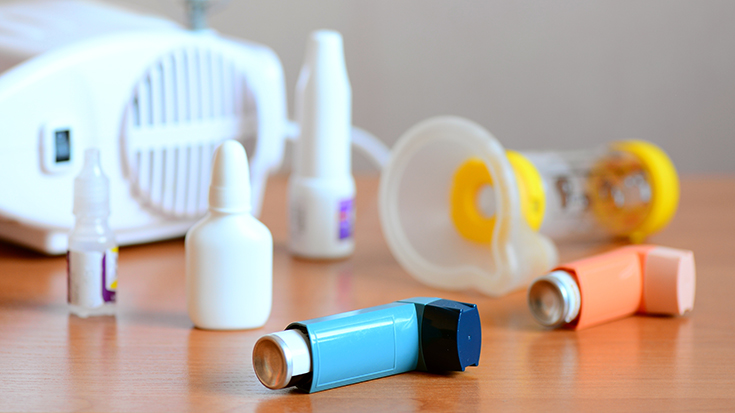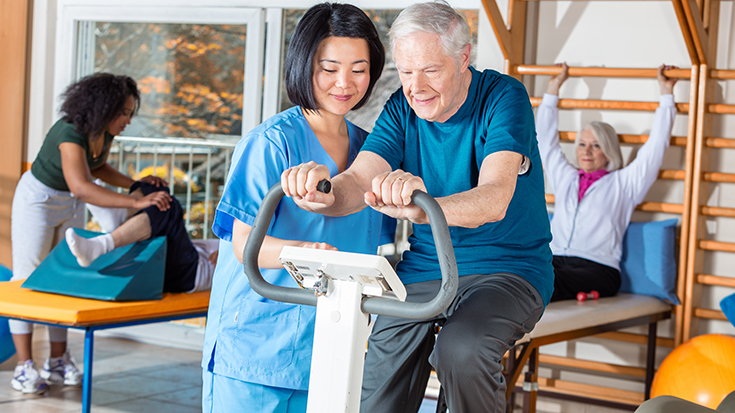
Video-Based Inhaler Education Works
According to researchers publishing in the June 9 edition of PLoS One, a video-based teach-to-goal (TTG) intervention can improve inhaler technique among people with COPD and asthma.
The randomized controlled trial was conducted among 152 patients who were assigned to either a verbal TTG intervention or the video-based TTG intervention. The video-based intervention consisted of a series of videos that outlined the steps necessary for proper inhaler technique, as defined by a standardized checklist. Patients were able to watch the videos on a smartphone until they had mastered each step in the process.
By a three month follow-up, patients in the video-based group had greater inhaler technique improvement than those in the verbal group, and at three months, patients in the video-based group were more likely to be adherent with their medications as well. Disease control improved from 35.3% at baseline to 54.9% in the video-based group, and quality of life was better in the asthma patients in that group too.
The authors believe these results are due to the improvement in inhaler use fostered by the use of inhaler technique videos that patients could easily access any time they needed to. Read More

In-Patient Pulmonary Rehabilitation Pays Off for Patients
A new study in the Annals of the American Thoracic Society adds to the evidence that in-patient pulmonary rehabilitation benefits COPD patients who have had a recent acute exacerbation of the disease.
Investigators from the University of British Columbia reviewed 27 randomized controlled trials involving 1,317 patients who had been hospitalized with an acute exacerbation of COPD. All the studies compared outcomes among those who were and were not assigned to pulmonary rehabilitation (PR) that began in the hospital and included at least two sessions.
Specific results showed —
- In seven studies involving 330 patients with complete 6MWD data and high-quality evidence, a 105.41 meter improvement over the minimally clinically important difference of 30 meters was observed with the use of PR.
- The five-repetition sit-to-stand test decreased by 7.02 seconds based on moderate quality evidence from three studies involving 135 patients, which is over the minimally clinically important difference of 1.7 seconds for that test.
- Moderate quality evidence from four studies involving 247 patients that assessed health-related quality of life through the 5-level EuroQoL Group-5 dimension version and two studies involving 69 patients that assessed it through the St. George’s Respiratory Questionnaire found that rehabilitation resulted in better scores than other interventions.
- Moderate quality evidence from four studies involving 183 patients showed lower limb muscle strength rose by 33.35 N in patients who received PR during their hospital stay.
- Hospital length of stay did not differ between the treatment and usual care groups according to moderate quality evidence from 17 studies involving 1,074 patients, suggesting the addition of PR does not lengthen the time a patient spends in the hospital.
- Arrhythmia was the only serious adverse event linked to rehabilitation in 15 studies with a total of 797 patients and it resolved within an hour of stopping the intervention.
The authors believe these findings show the value of in-patient pulmonary rehabilitation for patients with acute exacerbations of COPD. Read More

Race-Specific Equations Lead to Disparities in the Allocation of Lungs
The evidence against the use of race-specific equations for the interpretation of pulmonary function test results continues to mount. In a study published by the Annals of the American Thoracic Society, investigators from Johns Hopkins School of Medicine and elsewhere found using the race-neutral approach could have increased access to life-saving lung transplants for black patients.
The study involved 8,982 patients from the United Network for Organ Sharing database. A lung allocation score (LAS) was calculated for each patient using both the race-specific and race-neutral approach. According to the authors, when compared to the race-neutral approach, the race-specific approach resulted in a lower LAS for black patients and a higher LAS for white patients.
The LAS is based on age, oxygen requirements, and lung function test results. Patients with higher scores are given a higher priority on the transplant list.
Study author J. Henry Brems, MD, MBE, believes these findings and others “support the recent shift in ATS recommendations to use race-neutral equations as a way to advance the equitable care of respiratory disease.” Read More
Email newsroom@aarc.org with questions or comments, we’d love to hear from you.














